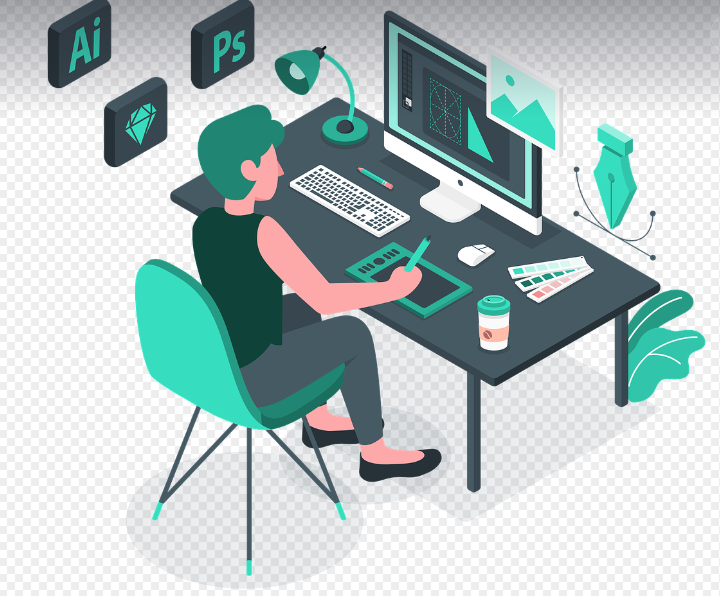
Custom web design isn’t just about having an eye-catching interface. It involves creating a unique digital space tailored to your specific needs and goals. I mean, think of it as your online business card which works 24/7.
Having a custom website allows you to stand out in the crowded digital world. If you’re running a business, especially in competitive markets, a well-designed custom site can be the game-changer, helping you attract and retain more visitors.
Now, let’s talk about why you’d actually need custom web design. Maybe your current site is stuck in the past, or perhaps you’re targeting a new audience. Updating or creating a custom site ensures you’re in line with modern design trends and functionalities. Essentially, it future-proofs your online presence.
And speaking of future-proofing – flexibility is another reason. Unlike generic templates, custom designs can grow with your business. They make tweaking and scaling faster and more efficient. So, whether it’s integrating new features or adapting to market changes, you’re covered.
In the end, it’s about control. With a custom design, you aren’t limited by the constraints of pre-built templates; you’re the boss. This allows for a site that not only looks great but also performs perfectly according to your specific requirements.
Breaking Down the Cost: What Influences Custom Web Design Pricing?
Several factors can impact the cost of custom web design, making it a bit of a puzzle sometimes. Different websites require different elements based on their goals and target audience, and these elements significantly influence pricing.
First off, the complexity of the website is a major contributor. If you want a simple, brochure-style website, the costs will be relatively low. But, if you’re looking for features like e-commerce capabilities, interactive elements, or integration with other services, expect the costs to rise. More complexity means more time and effort from the designer or team working on your site.
Functionality is another critical influencer. Think about what you need your website to do. Features such as user accounts, forums, booking systems, or custom plugins and APIs can increase the overall cost of the web design project. Each of these adds layers of complexity and requires time to develop and test properly.
Different industries also have different needs, and this influences cost. For example, a law firm’s website might need specific legalese and case studies, while a fashion retailer might focus heavily on visual appeal and user experience. The industry-specific requirements and standards can lead to significant cost variations.
An often-overlooked aspect is the designer’s experience and expertise. Top-tier designers charge more, but they often bring innovative solutions and higher quality to the table. You’re not just paying for the time they spend on your site, but also for their years of skill and industry knowledge.
Don’t forget hidden costs like ongoing maintenance, updates, and content management. These can add up over time, so it’s crucial to consider them when budgeting for your custom website. Having a plan for these will save future headaches and ensure your site stays fresh and functional.
In summary, the cost of custom web design hinges on numerous factors: complexity, functionality, industry-specific needs, designer expertise, and recurring maintenance. Understanding these can help you budget more effectively and set realistic expectations for your project.
How Much Does a Custom Website Design Cost?
The typical cost range for custom web design in 2023 can vary widely, from as little as £2,000 to upwards of £50,000 or more. The price depends mainly on what you’re asking for. Basic sites with minimal features might land on the lower end of the spectrum, but if you’re looking for something feature-rich with special integrations or custom functionalities, expect those numbers to climb.
Let me share some real-world examples. Imagine a small local bakery in need of a straightforward informational site with a few product listings. They might spend around £3,000 to £5,000. On the other hand, an e-commerce giant with thousands of products, user accounts, and advanced search capabilities could easily drop £30,000 to £50,000 or more.
Budgeting is essential for something like this. Break down your needs and must-haves versus nice-to-haves. By prioritizing, you can allocate your resources better. For instance, investing in a compelling homepage might bring more ROI than splurging on a fancy, rarely-used feature.
There are always ways to trim costs without sacrificing quality. Opting for open-source platforms, being clear about your requirements from the get-go, and working closely with your design team can help keep expenses in check. Also, don’t be afraid to negotiate—sometimes even a small discussion on pricing can make a big difference.
Ultimately, the cost of a custom website design hinges on your unique needs and goals. But with thoughtful planning and clear communication with your designers, you can create a site that offers great value without blowing your budget.
Pricing Your Web Design Services As a Freelancer or Agency
Formulating your pricing strategy can feel like a minefield when you’re first starting out. But it doesn’t have to be. Begin by considering your own costs and desired profit margins. This includes everything from your time and expertise to any software or tools you use.
A solid baseline is vital. You need to have an idea of your overheads and how much you want to earn per hour. Don’t undersell yourself just to get clients. Your skills and experience have value.
It helps to look at what others are charging. Competitive analysis can give you a good benchmark. Check out rates from both freelancers and agencies in your niche. This can offer a realistic starting point for your own pricing. But remember, your value proposition might allow for higher rates than your competitors if you offer something unique or have a strong track record.
Value-based pricing can be an excellent approach, especially if you offer specialized skills or unique services. Instead of charging per hour, you charge based on the value you’re bringing to the client’s business. This could be increasing their conversions, improving their online presence, or integrating useful features. Clients often appreciate the clear link between what they’re paying and what they’re gaining.
However, sometimes hourly rates are more suitable, especially for ongoing projects or maintenance. It makes things straightforward and clear-cut. But even here, clear justifications for the hours you’re logging build trust and clarify expectations.
Lastly, learn to articulate and justify your pricing to clients. Transparency is key. Explain why your services cost what they do, breaking down the factors involved. This not only builds trust but also helps clients see the value in your work. When clients understand they’re getting quality and expertise, they’re more inclined to agree with the pricing.
Maximizing ROI: The True Value of Investing in Custom Web Design
Investing in custom web design is more than just a one-time expense; it’s a strategic move towards long-term growth and success. The benefits far outweigh the initial costs when you consider the impact on your business.
One of the standout advantages is the long-term benefits. Custom websites are built to evolve with your business. As you grow and your needs change, your site can be adapted without starting from scratch. This saves you both time and money in the long run.
Measuring success isn’t just about analytics and metrics; it’s about how well your website is performing in terms of user experience and engagement. Tailored web designs often come with enhanced user interfaces, which can lead to higher customer satisfaction and retention rates.
A well-constructed site improves user experience significantly, making it easier for visitors to find what they need and engage with your content. This can translate into higher conversion rates and more loyal customers.
Real-life testimonials and success stories can also underscore the value of custom web design. Businesses often see increased lead generation, better customer feedback, and a noticeable uptick in sales after investing in a custom site.
Ultimately, the true value of a custom website lies in its ability to offer a unique, engaging, and efficient user experience that aligns perfectly with your brand and objectives. It’s an investment that pays off in more ways than one, ensuring your online presence is as powerful and effective as it can be.
